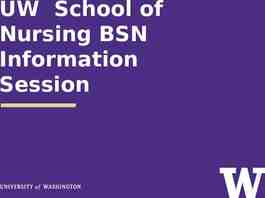PAIN MANAGEMENT RELATIVE TO MDS F309
41 Slides160.00 KB
PAIN MANAGEMENT RELATIVE TO MDS F309
Pain as it relates to MDS Section J. Health Conditions
J2: Pain Symptoms Intent: – Record the frequency and intensity of signs and symptoms of pain. Pain Definition: – Pain refers to any type of physical pain or discomfort in any part of the body. May be localized or generalized May be acute or chronic May be continuous or intermittent May occur at rest or with movement Pain is very subjective; pain is whatever the resident describes.
J2: Pain Symptoms – Process and Coding Ask resident if they have pain and to describe the pain. Observe the resident for indicators of pain. Ask the CNA and therapist who work with the resident if the resident had complaints or indicators of pain. Code for the frequency of pain in J2a. Code the highest intensity of pain that occurred during the observation period in J2b. Code presence or absence of pain, regardless of pain management efforts; i.e, breakthrough pain.
J2a: Pain Symptoms – Frequency Intent: – How often does resident complain or show evidence of pain. 0 – No Pain (Skip to item J4) 1 – Pain Less than Daily 2 – Pain Daily Facilities should have a consistent, uniform and standardized process to measure and assess pain. If having difficulty determining the exact frequency of pain, code for the more severe level of pain. – Rationale: Residents having pain will usually require further evaluation to determine the cause and to find interventions that promote comfort. Pain control often enables rehabilitation, greater socialization and activity involvement.
Quality Measure Section J A. If Frequency and B. Intensity marked pain is daily and/or times when resident exhibits moderate pain or describes or exhibits s/s pain is horrible or excruciating Will be reflected on QI
J2a: Pain Symptoms – Frequency Common Reasons for Discrepancy: Not capturing how often the resident complains or shows evidence pain MAR documents pain and pain medication received – MDS coded as No Pain
New pain management guidance Changes to Interpretive Guidance (effective March 31, 2009) F309 Quality of Care 42 CFR 483.25 Includes a new general investigative protocol
F309 Quality of Care Although the regulation does not specifically mention a particular condition, it does require that the necessary care and services be provided for each resident to attain or maintain his or her highest practicable level of well-being. Because different conditions have the potential to negatively affect a resident’s well-being, the facility is expected to provide the necessary care and services necessary to improve, maintain, or prevent decline, to the extent possible.
Pain Management Protocol Facilitates in determining whether the facility is in compliance with the Quality of Care requirement as it relates to the provision of care and services to meet the needs of residents, including the recognition and management of pain.
42 CFR 483.25 Quality of Care (F309) Each resident must receive and the facility must provide the necessary care and services to attain or maintain the highest practicable physical, mental, and psychosocial well-being, in accordance with the comprehensive assessment and plan of care.
42 CFR 483.25 Quality of Care (F309) Note: Use guidance at F309 for review of quality of care not specifically covered by 483.25 (a) – (m). F309 includes but is not limited to care such as end-of-life, diabetes, renal disease, fractures, congestive heart failure, nonpressure-related skin ulcers, pain, or fecal impaction.
General Investigative Protocol Use the General Investigative Protocol (IP): To investigate any Quality of Care concern not otherwise covered in the remaining tags of §483.25, Quality of Care; Note: For investigating concerns related to pain or the management of pain, use the pain management investigative protocol.
General IP - Components Components include the procedures for: – Observations; – Resident/Representative Interview; – Nursing Staff Interview;
General IP - Components Assessment; Care Planning Care Plan Revision Interview with Health Care Practitioners and Professionals
Concerns with Independent but Associated Structure, Process, and/or Outcome Requirements 42 CFR 483.10(b)(11), F157, Notification of Changes 42 CFR 483.(20)(b), F272, Comprehensive Assessments 42 CFR 483.20(k), F279, Comprehensive Care planning 42 CFR 483.20(k)(2)(iii), 483.10(d)(3), F280, Care Plan Revision 42 CFR 483.20(k)3)(i), F281, Services Provided Meets Professional Standards of Quality
Concerns with Independent but Associated Structure, Process, and/or Outcome Requirements 42 CFR 483.20(k)(3)(ii), F282,Care Provided by Qualified Persons in Accordance with Plan of Care 42 CFR 483.30(a)(1)&(2), F353, Sufficient Staff 42 CFR 483.40(a)(1)&(2), F385, Physician Supervision 42 CFR 483.75(f), F498, Proficiency of Nurse Aides 42 CFR 483.75(i)(2), F501, Medical Director 42 CFR 483.75(l), F514, Clinical Records
Interpretive Guidance – Related to Pain Review of a Resident who: Has pain symptoms; Is being treated for pain; or Who has the potential for pain symptoms related to conditions or treatments.
Interpretive Guidance (IG) Related to Pain Regarding Pain Recognition and Management: Introduction Definitions Overview Care Process for Pain Management Investigative Protocol Compliance Determination Deficiency Categorization
Care Planning of Pain It is important to remember that there is no requirement that there be a separate care plan established for pain management. The interventions for managing the pain, for example, may be incorporated into the plan for dressing changes or treatments or may be incorporated as an entirely separate problem or need. The interventions and treatment approaches should be preceded by an appropriate evaluation of the pain.
Hospice Services in Nursing Home Setting If the resident is receiving hospice services for end-of-life care, it is important that the care of the resident be appropriately coordinated among all providers. The nursing home remains the resident’s primary care giver and the SNF/NF requirements for participation in Medicare or Medicaid still apply for that resident. Hospice and facility staff need to work together to be sure that whatever is needed to implement the interventions to manage the pain is available and that staff are trained on the resident’s pain management regimen.
Goal EFFECTIVE PAIN MANAGEMENT
Investigative Protocol (IP) For Pain Management To determine whether: The facility provided and the resident received care and services to address and manage the resident’s pain, and The resident’s highest practicable level of physical, mental, and psychosocial well-being were supported, in accordance with the comprehensive assessment and plan of care.
Surveyor’s protocol for a sampled resident who: States he/she has pain or discomfort; Displays possible indicators of pain that cannot be readily attributed to another cause; Has a disease or condition or who receives treatments that cause or can reasonably be anticipated to cause pain; Has an assessment indicating that he/she experiences pain; Receives or has orders for treatment for pain; and/or Has elected a hospice benefit for pain management Pain is reflective in QI’s
IP - Procedures Observation Interview Record Review
IP - Observation Observe the resident during various activities and over various shifts to determine: If the plan of care for the management of pain (if any) is implemented as written; Whether the resident has pain and the impact of the pain; and If staff recognized potential or actual pain and their response.
IP - Resident Interview Interview the resident or responsible party to determine: If the resident has or has had pain and its characteristics; Care-planning participation and goals; and Implementation and results/effectiveness of approaches
IP - Nurse Aide Interview Interview direct care staff on various shifts to determine: Whether they are aware of resident’s pain; and How they respond to the resident’s pain.
IP - Record Review Assessment: Review information sources, e.g., orders, MAR, progress notes, assessments including RAI/MDS Determine if information accurately, and comprehensively reflects resident’s condition
IP: Care Plan Review Pain management goals Interventions Monitoring Facility specific pain management protocol, if being used Revised as necessary
IP - Nurse Interview Interview a nurse who is knowledgeable about the resident’s pain management to determine how staff: Identify, assess, develop interventions, monitor the response, communicate with the prescriber and revise the plan as appropriate; and For a resident receiving the hospice benefit, coordinate approaches, communicate and monitor the outcomes (both effectiveness and adverse consequences) with the hospice.
IP - Interview Interview other knowledgeable health care professionals about the evaluation and management of the resident’s pain/symptoms if: Interventions or care appear inconsistent with current standards of practice; and/or Resident’s pain appears to persist or recur.
Noncompliance with Quality of Care for Resident with Pain-F309 Failure to: Recognize and evaluate the resident who is experiencing pain in enough detail to permit pertinent individualized pain management; Develop interventions for a resident who is experiencing pain; Provide pain management interventions in situations where pain can be anticipated; Implement interventions to address pain to the greatest extent possible consistent with the resident’s goals and current standards of practice and failed to provide a clinically pertinent rationale why this was not done; Monitor the effectiveness of intervention to manage pain; or Coordinate pain management with an involved hospice as needed
Concerns with Independent but Associated Structure, Process, and/or Outcome Requirements 42 CFR 483.10(b)(4) F155, The Right to Refuse Treatment 42 CFR 483.10(b)(11), F157, Notification of Changes 42 CFR 483.15(b), F242, Self-determination and Participation. 42 CFR 483.15(e)(1), F246, Accommodation of Needs
Concerns with Independent but Associated Structure, Process, and/or Outcome Requirements 42 CFR 483.20, F272, Comprehensive Assessments 42 CFR 483.20(g) F278, Accuracy of Assessments 42 CFR 483.20(k), F279, Comprehensive Care Plans 42 CFR 483.20(k)(2)(iii), 483.10(d)(3), F280, Comprehensive Care Plan Revision 42 CFR 483.20(k)(3)(i), F281, Services provided meet professional standards of quality 42 CFR 483.20(k)(3)(ii), F282, Care provided
Concerns with Independent but Associated Structure, Process, and/or Outcome Requirements 42 CFR 483.25(l), F329, Unnecessary Drugs 42 CFR 483.40(a), F385, Physician Supervision 42 CFR 483.60, F425, Pharmacy Services 42 CFR 483.75(i)(2), F501, Medical Director 42 CRF 483.75(l) F514, Clinical Records
Deficiency Categorization Pain Recognition and Management Severity Determination Considerations Levels 4 through 1. The key elements for severity determination are: Presence of harm or potential for negative outcomes Degree of harm or potential harm related to noncompliance Immediacy of correction required
Severity Level 4 Level 4: Immediate Jeopardy to resident health or safety. Noncompliance with one or more requirements of participation: – Has allowed, caused, or resulted in (or is likely to allow, cause, result in) serious injury, harm, impairment, or death to a resident; and – Requires immediate correction
Severity Level 3 Level 3: Actual Harm, not Immediate Jeopardy Noncompliance May resulted in harm include clinical compromise, decline, inability to maintain/reach highest practicable well-being
Severity Level 2 Level 2: No actual harm with potential for more than minimal harm that is not immediate jeopardy. Noncompliance resulted in: No more than minimal discomfort, The potential to compromise the resident’s ability to maintain or reach his or her highest practicable level of well-being, and/or The potential for greater harm if interventions are not provided
Severity Level 1 Level 1: No actual harm with potential for minimal harm Noncompliance with F309 with regard to quality of care for a resident with pain places the resident at risk for more than minimal harm Severity Level 1 does not apply for F309 Quality of Care related to Recognition and Management of Pain














































